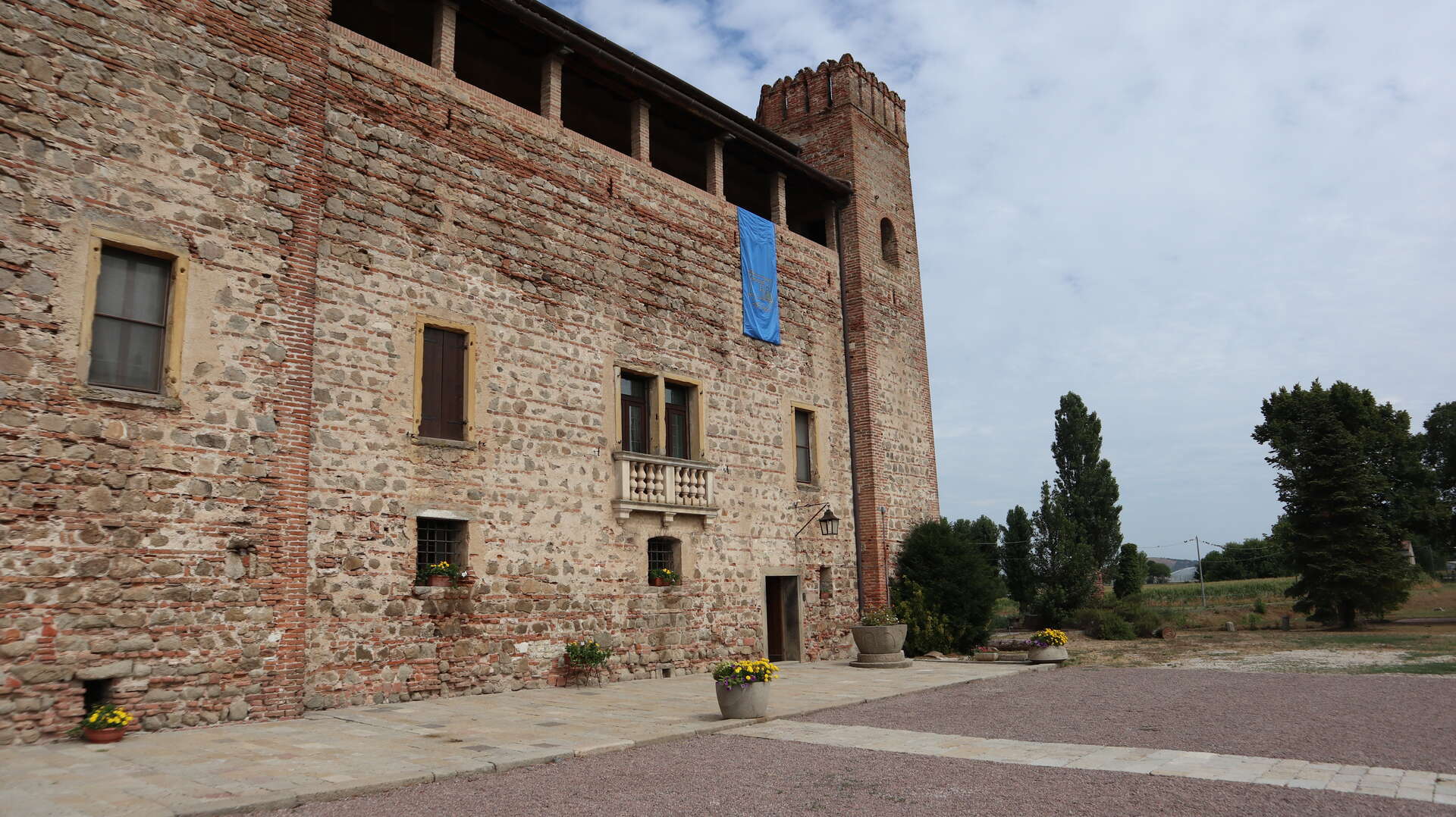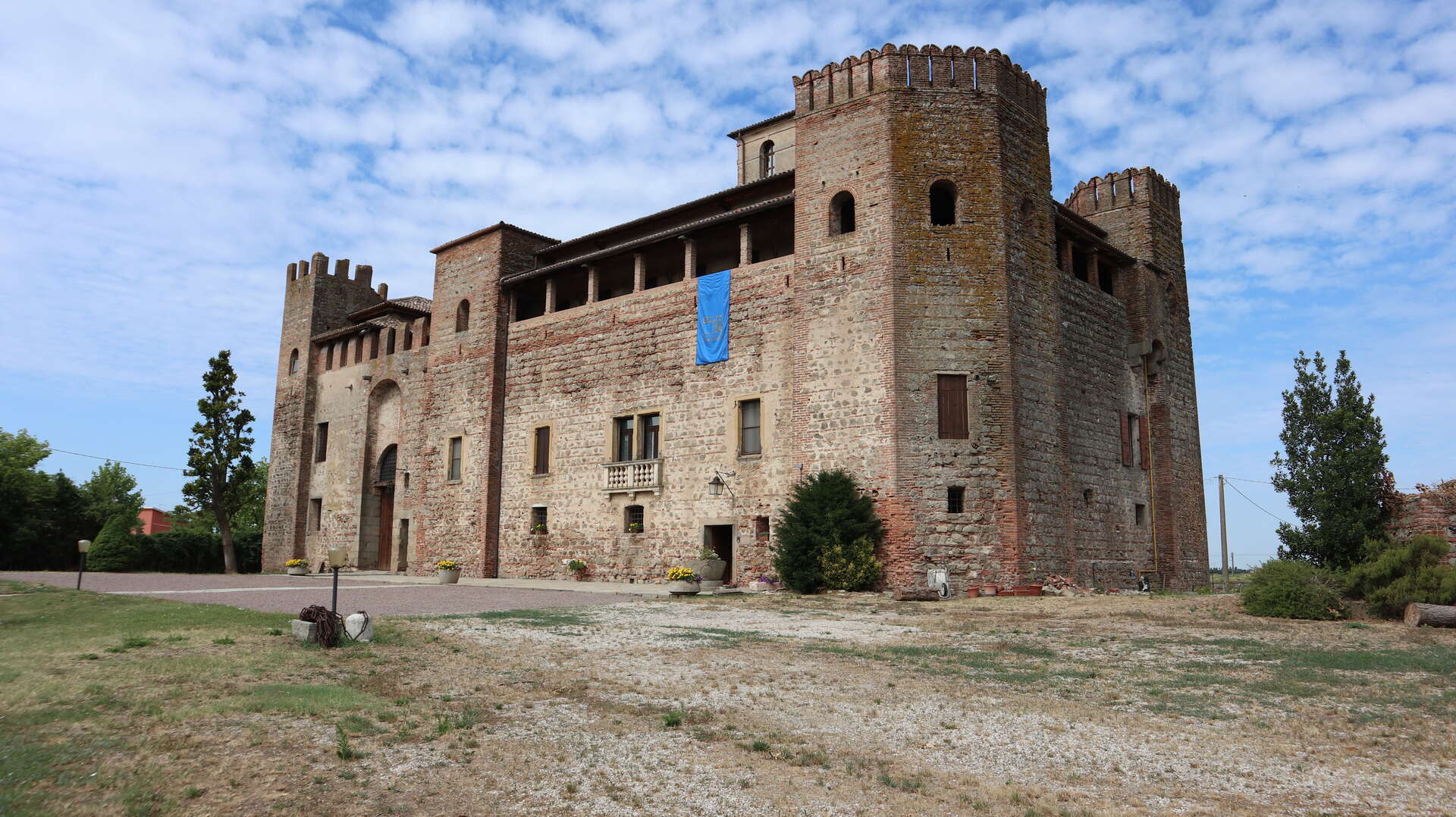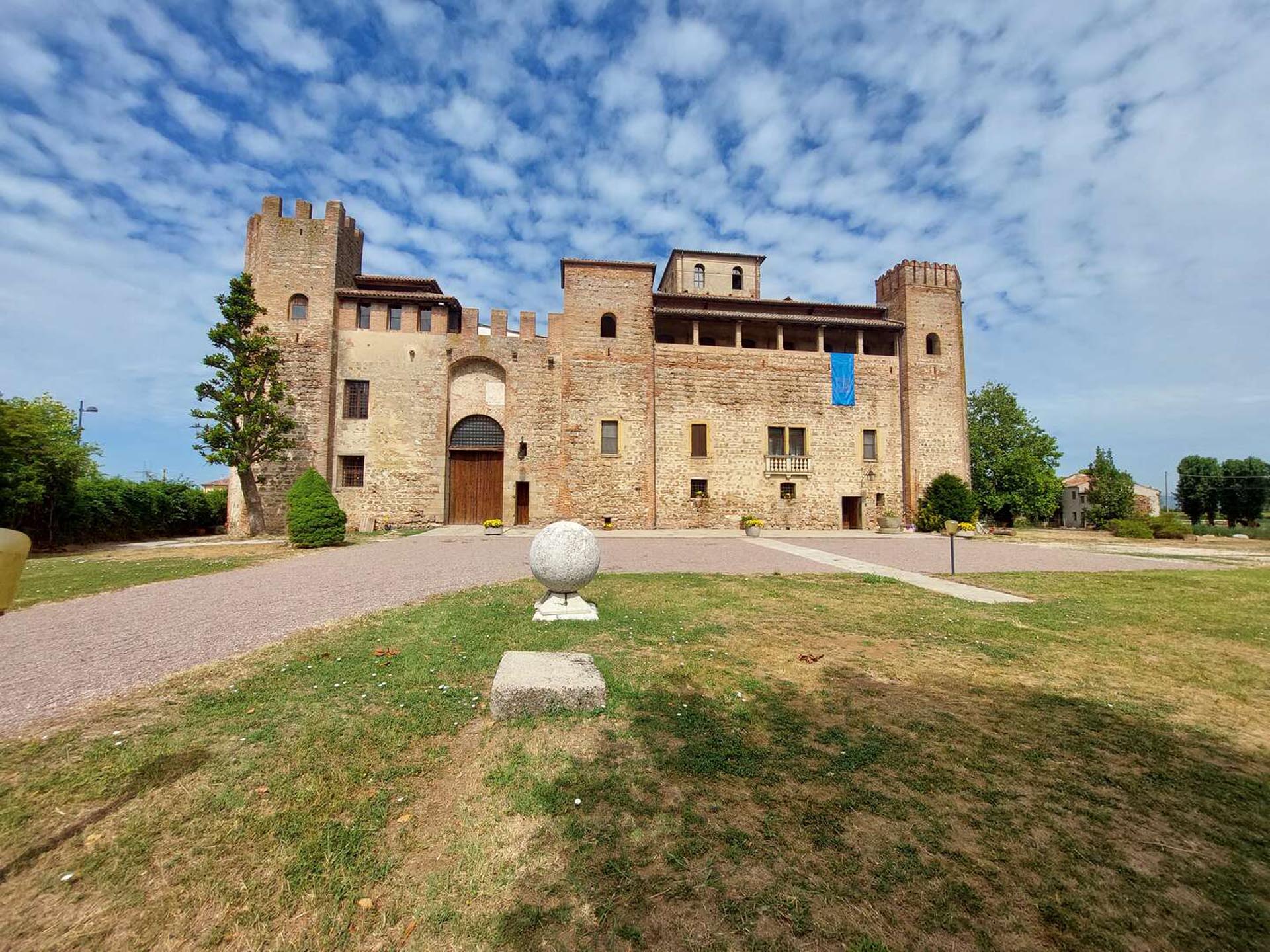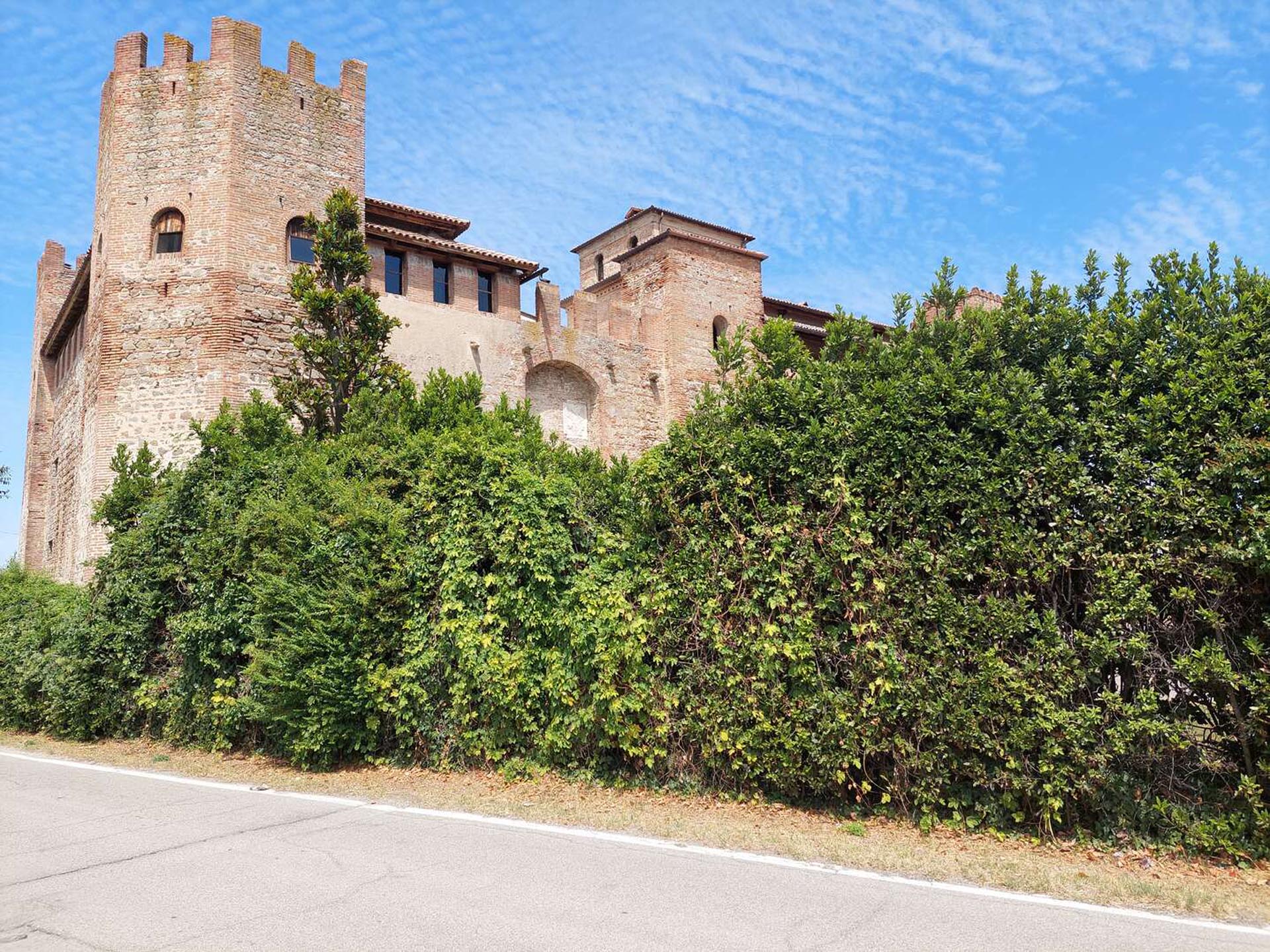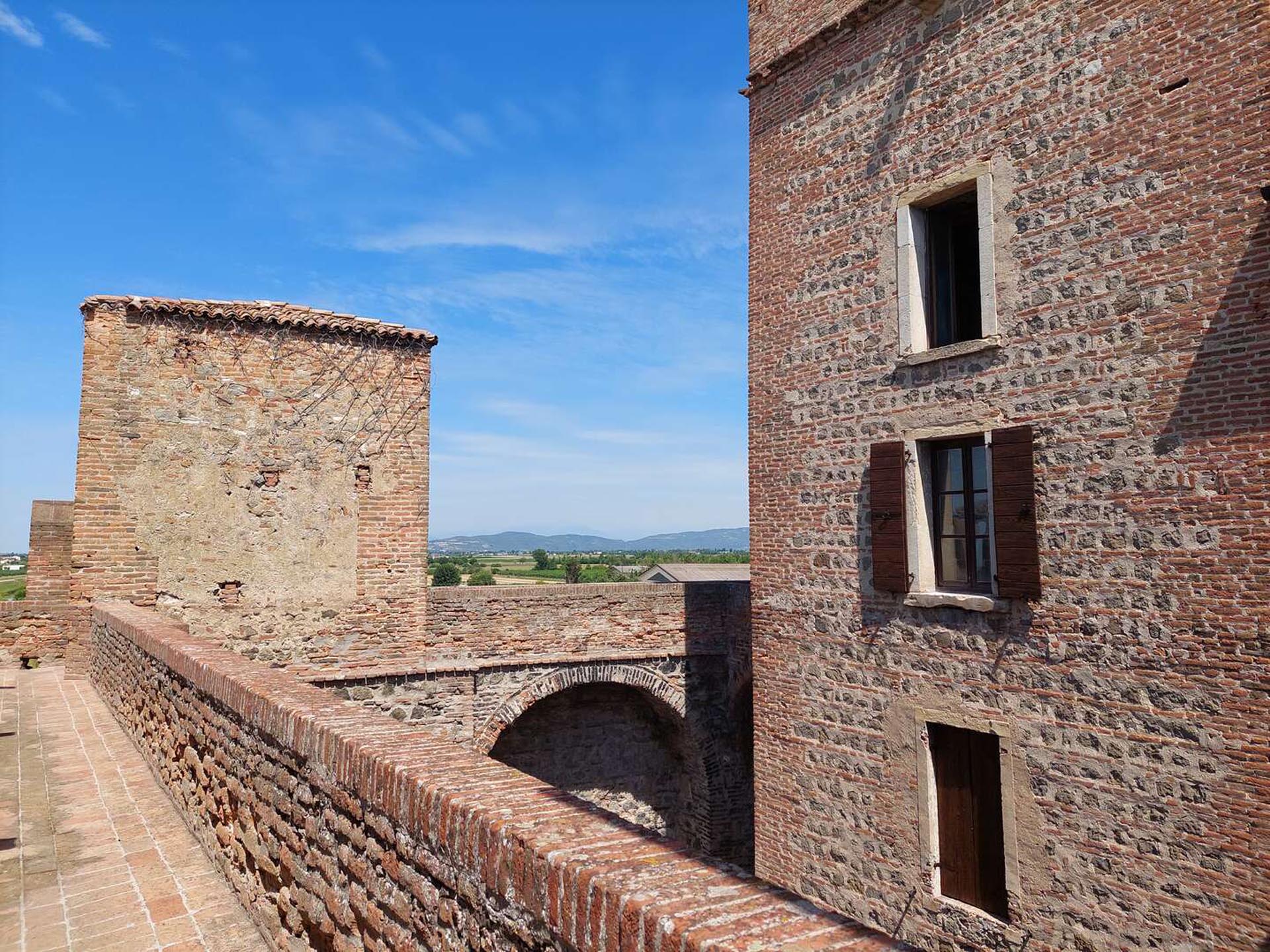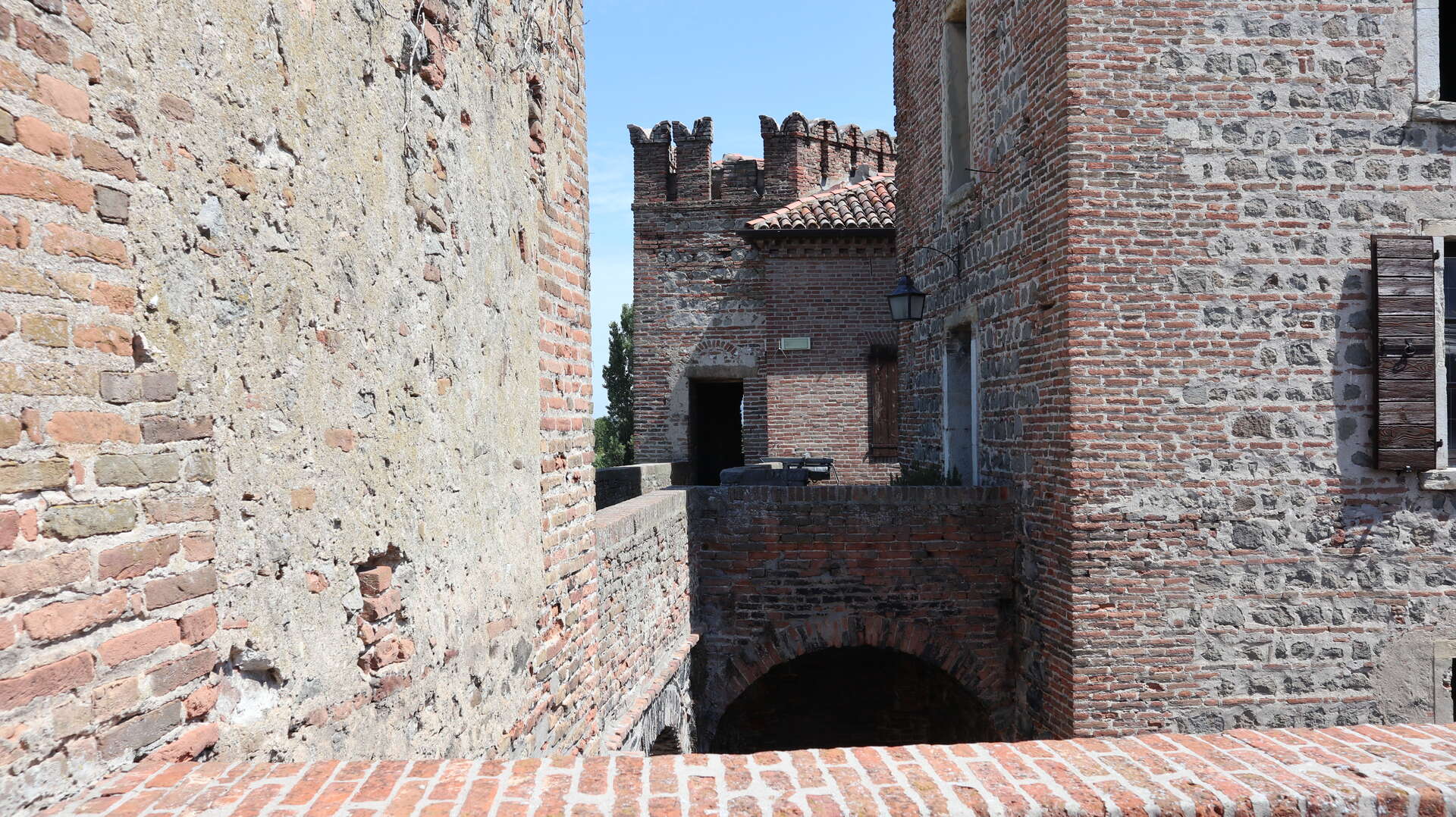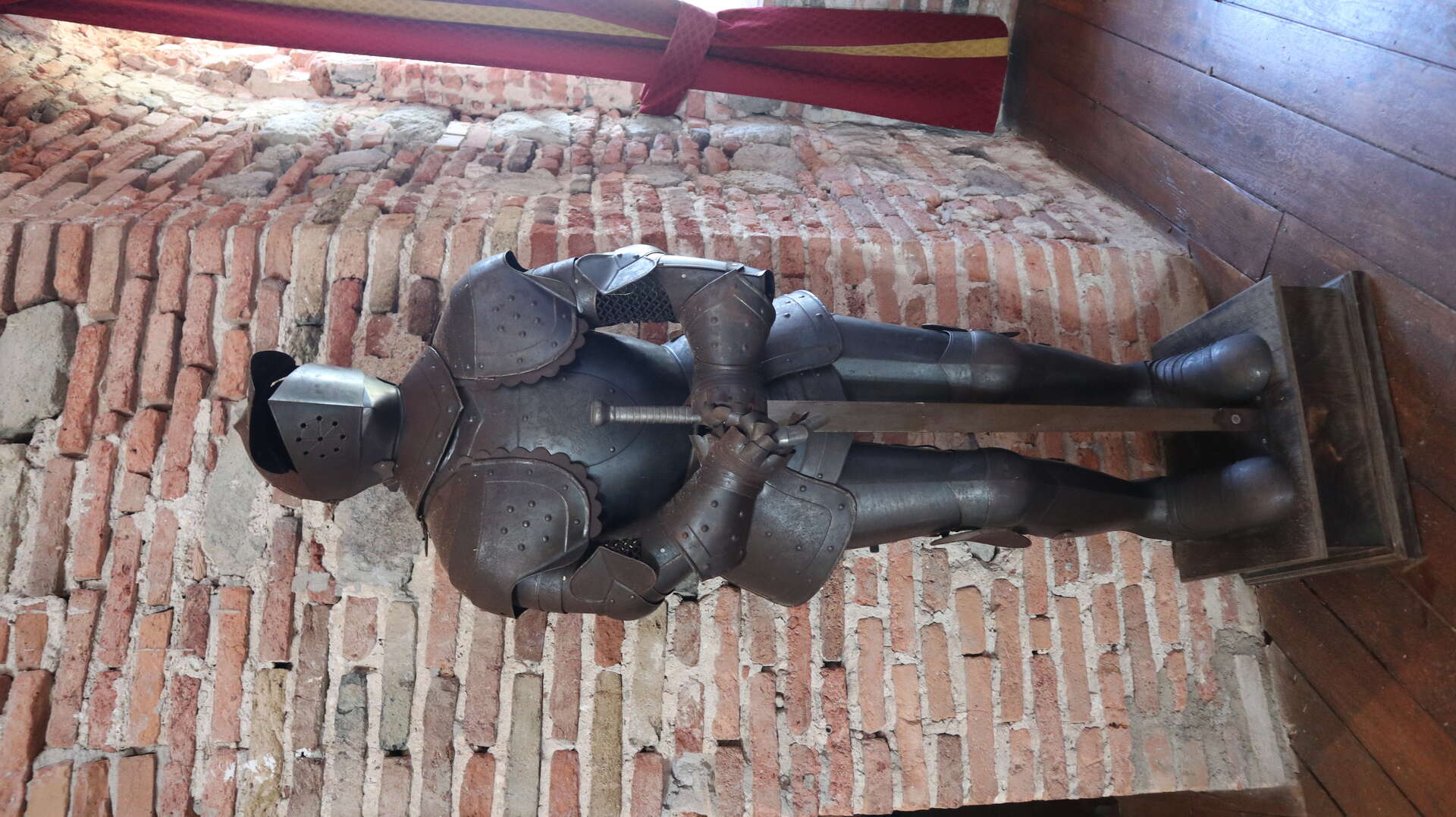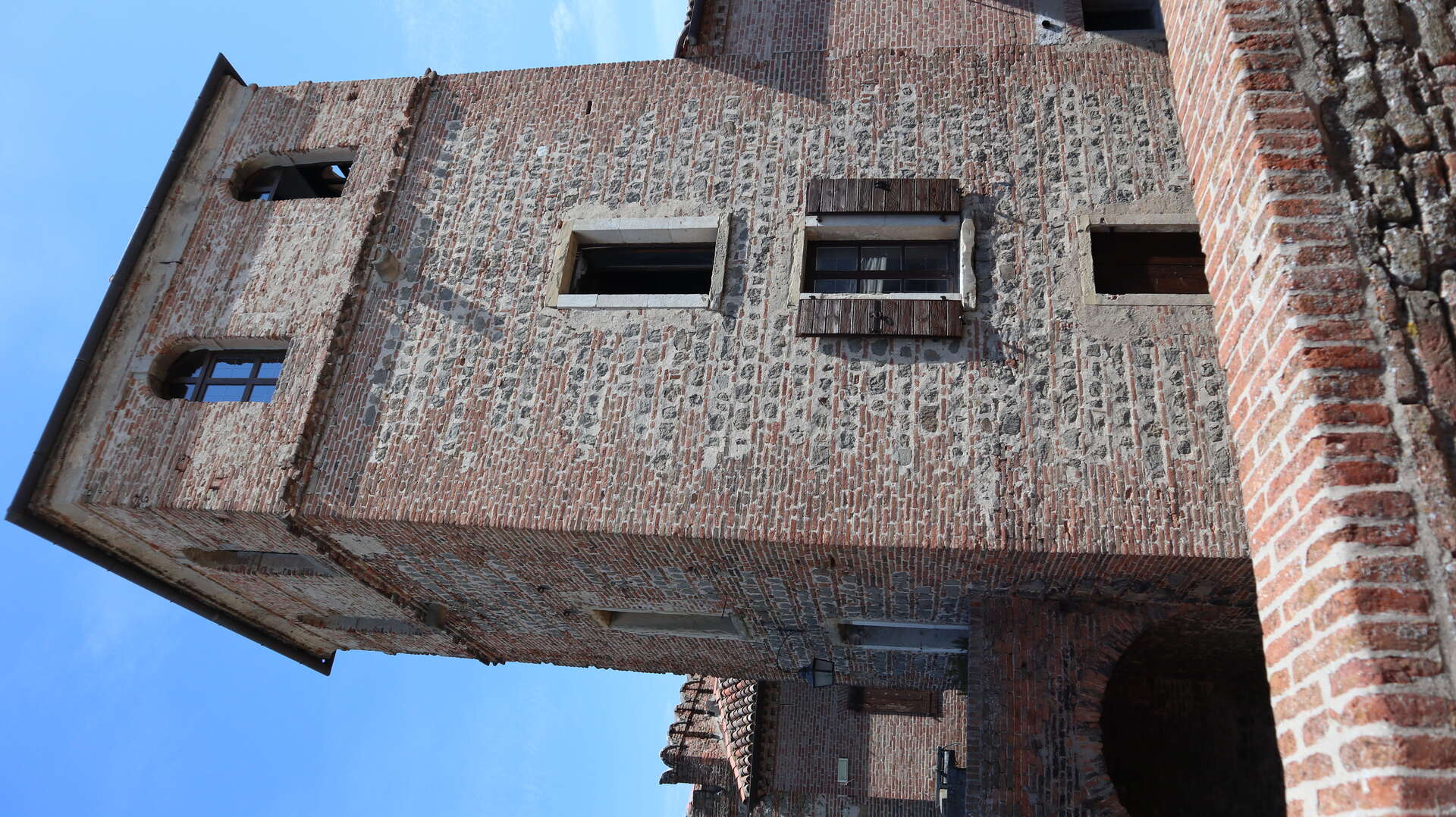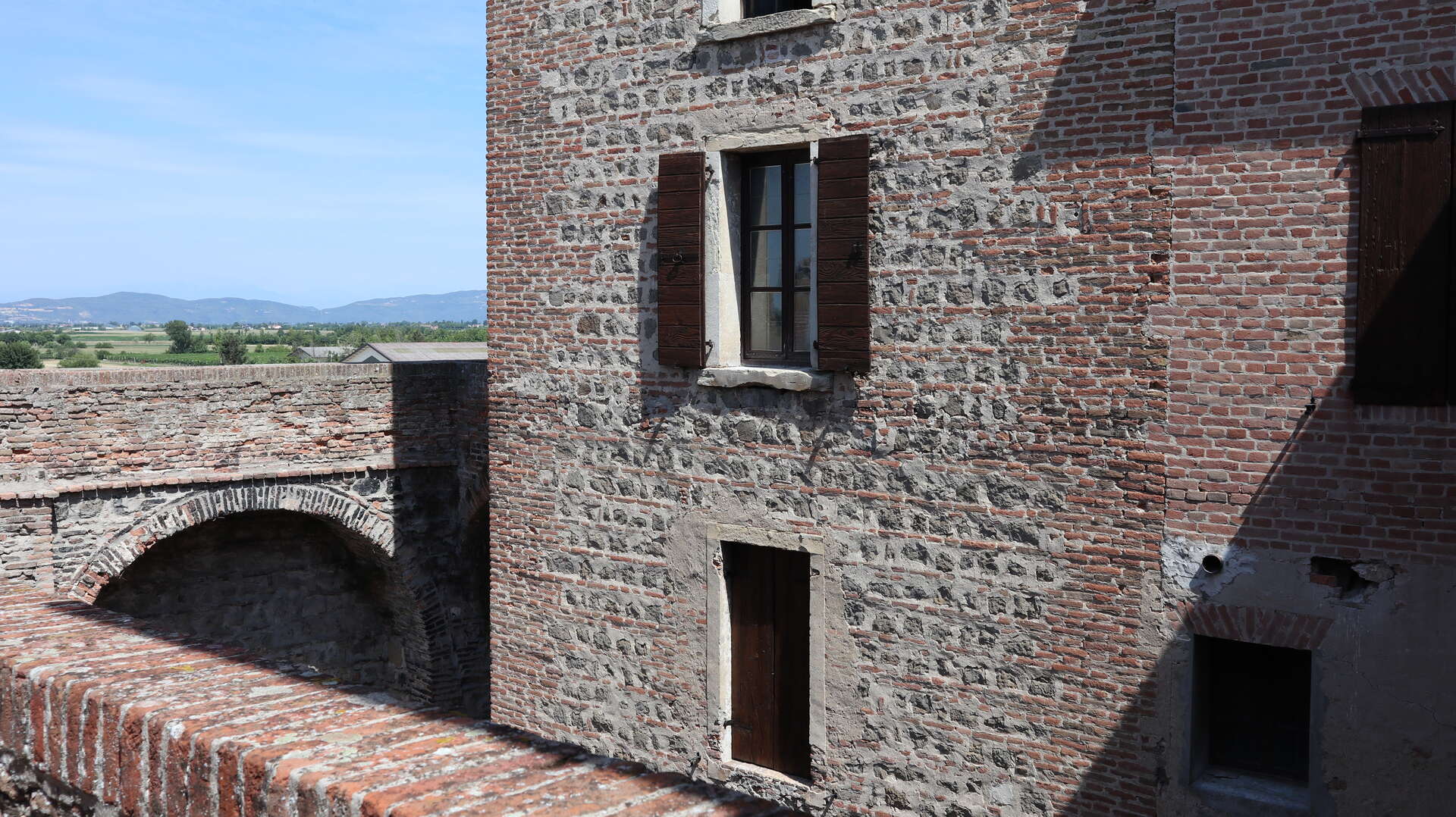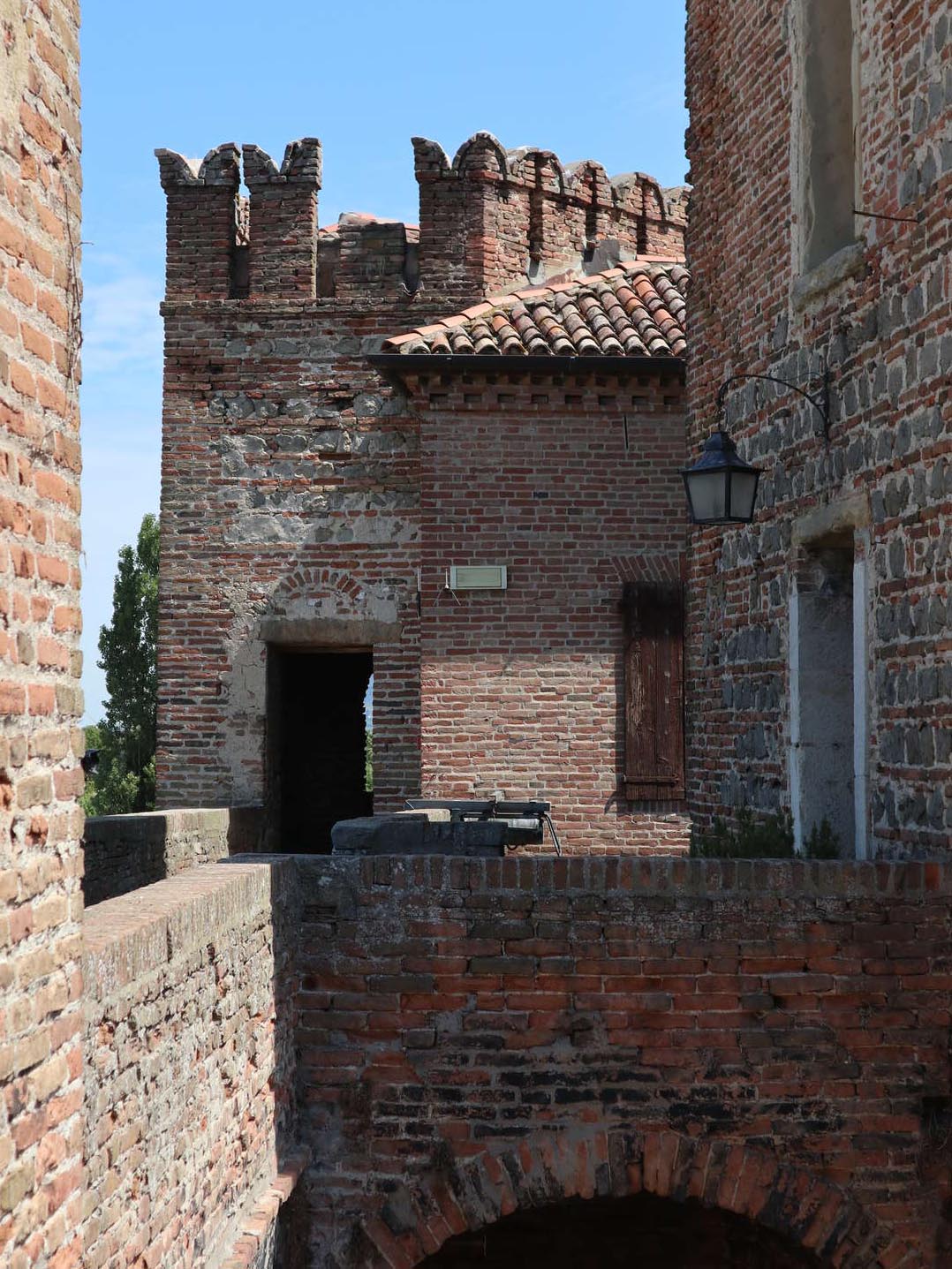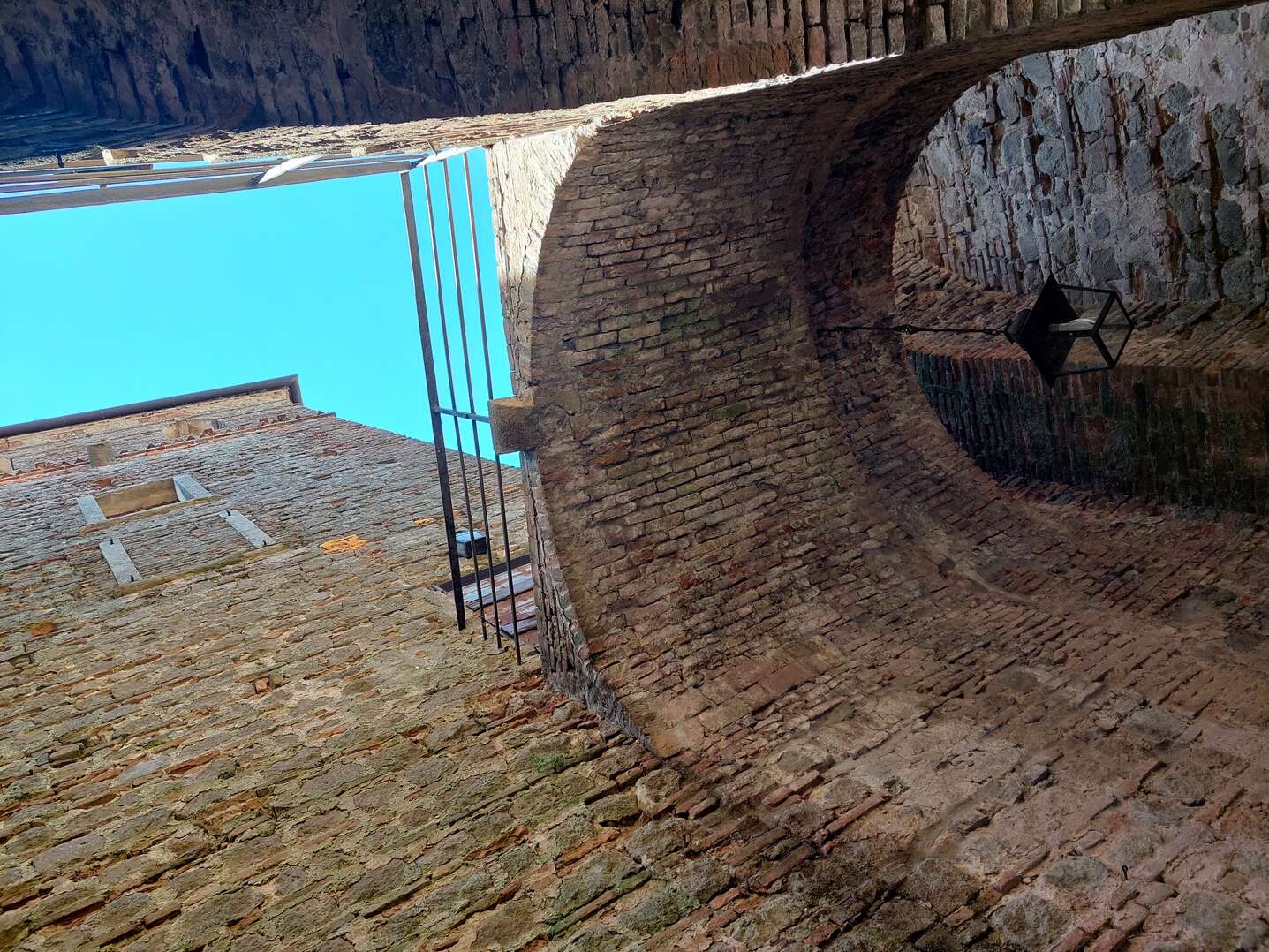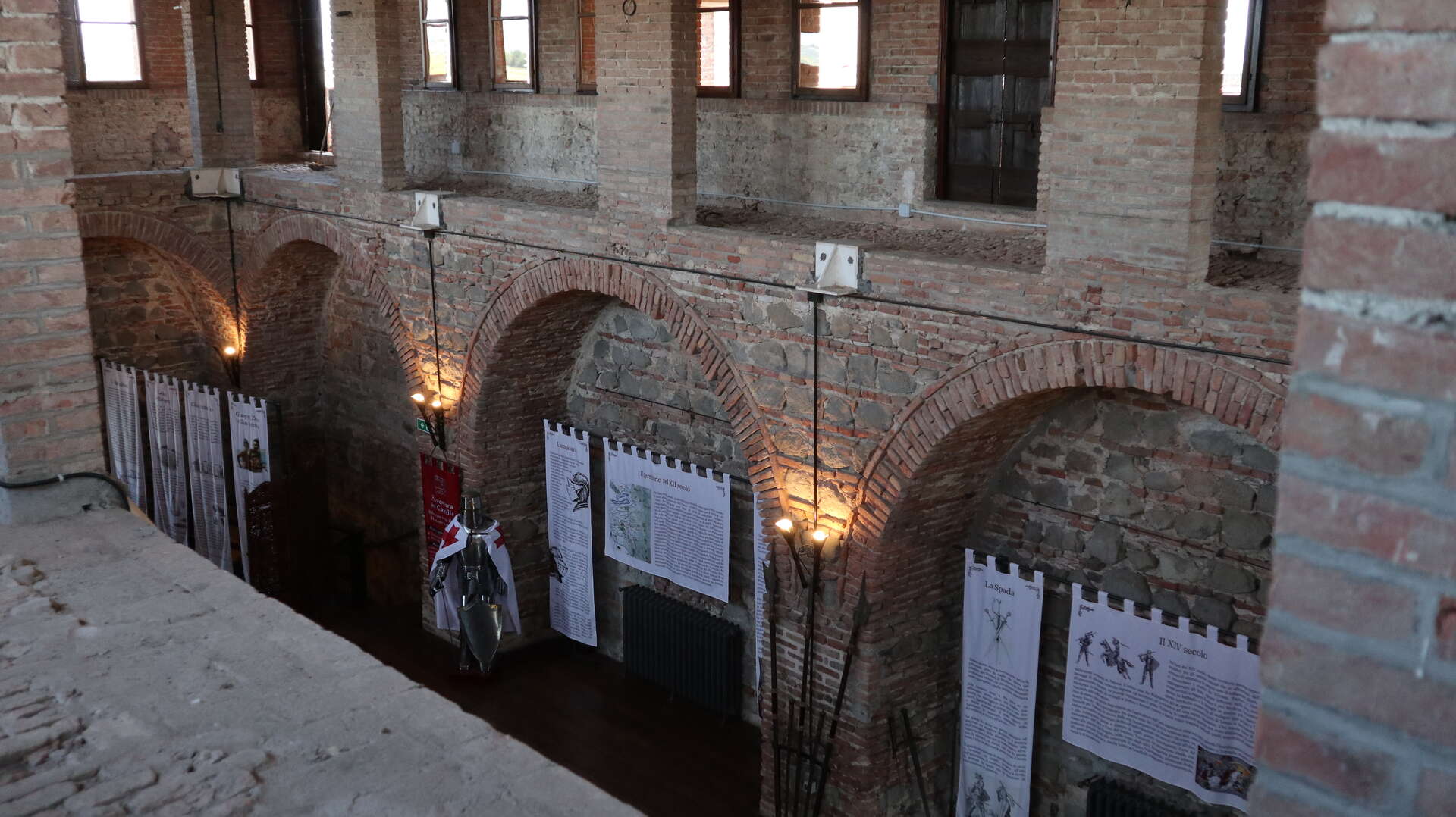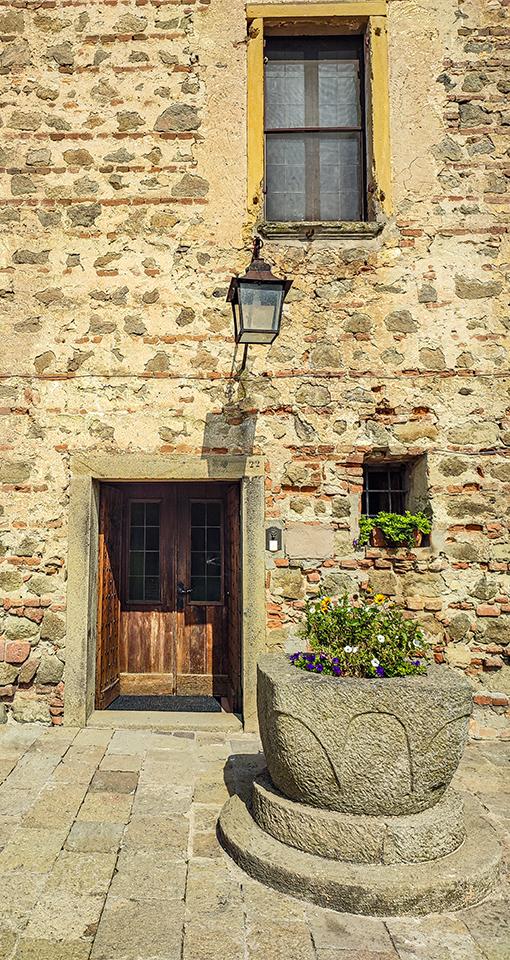
Built around 1260 and already mentioned in 1280,
that of Valbona is not a castle, but actually a manor: not the seat of a lord with his family and a small court,
but a military structure conceived to defend and offend, inhabited only by soldiers and a captain.
Located on the border between Padua and Vicenza, it was immediately involved in the struggle between
Scaligeri and Carraresi: the feudal lords of Orgiano took it in 1313, but were expelled from it as early as 1319,
when the Lords of Padua had the large slabs walled up with their coats of arms above the doors, where the only road
passed - as can still be understood today - forcing wagons to enter through the large doors and pedestrians through the small doors, closing
the large grates, currently being restored, and collecting the duty: still today the central environment is called
the "old customs house", further west the weapons room, above the knights' room, to the east a courtyard with stables
for horses and all the animals needed to hold up a siege, fodder and a well, wait that are being recovered, like the two drawbridges.
The arrival of Venice in 1420 puts an end to the city struggles, erases the territorial boundaries and the related duties.
The force is no longer against the neighbours, but towards the environment for sustainable agriculture.
The feudal lords of Orgiano, who grew up and also became Counts of Agugliaro, apply their superfine military techniques to
dig ditches and drains, like the one next to it that still bears their name today, thus reclaiming the land, introducing
the salted pig (nearby is the Località Saline) becomes ham, transported on the Bisatto canal to Venice, light nourishment,
not bulky and not perishable for the ancient galleys of the Serenissima. But the domestic papers tell us about fish with mushrooms,
rice and peas, a so called "married soup", with an insight into the value of food, the progress of the day, the rhythm of the
newspaper: for example, the Valbona prawns that came sold at the Padua market.
But there are also the prison records, of who was tried, locked up and sentenced, even to death, before 1420, and why: all aspects of a community.
Some details of a unique monument that we have seen many times, but perhaps we have not looked at much. The structure is trapezoidal, as in many
military structures, but the corner towers here are hexagonal: an absolute rarity, in Italy as well as abroad, because the oldest are usually
square and the most recent are circular to better deflect shots.
Still, above each arched window you can still see two iron rings: these are the hinges for hinging a window with the colours of the family
that opened as in ancient sailing ships to strike with arches and crossbows and be closed again.
Two novelties emerged in the cleaning and peeling of the encrustations suffered by the monument in recent decades: the tastings of the materials
allowed the Faculty of Engineering of the University of Padua to date the keep to about eight hundred years ago.
But it is in June 2022 the discovery in the northwest tower of the positions of four guns. And in fact, from the domestic papers it appeared
that Valbona had been armed during the Cambrai War, aiming two cannons on via Frassenelle and two on via Condotto, at the time the only
possible passages at the intersection of the canals in a still marshy terrain. There is more, because in other buildings, the family still
retains three cannons from the early sixteenth century, with dimensions compatible with the newly discovered housings. With time and patience,
it is hoped to return them to their place, thus recreating a piece of history that had been discovered, making everything accessible to respectful tourists,
to passionate visitors.
The landlord is keen to profess himself pro tempore family guardian of this monument: who speaks to those who know how to listen,
who shows those who know how to look, who indicates to those who can guess the testimony of our past, the hope and courage of our future.
In a word, our Identity. The identity of a community. The identity of Valbona.
Welcome, indeed: welcome back to the Valbona Castle.




